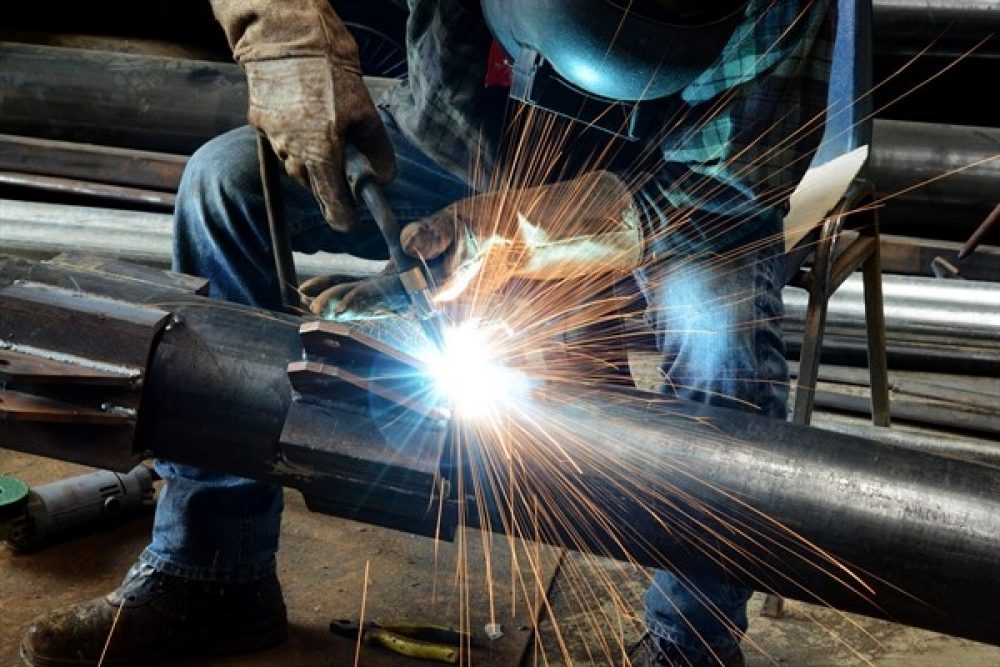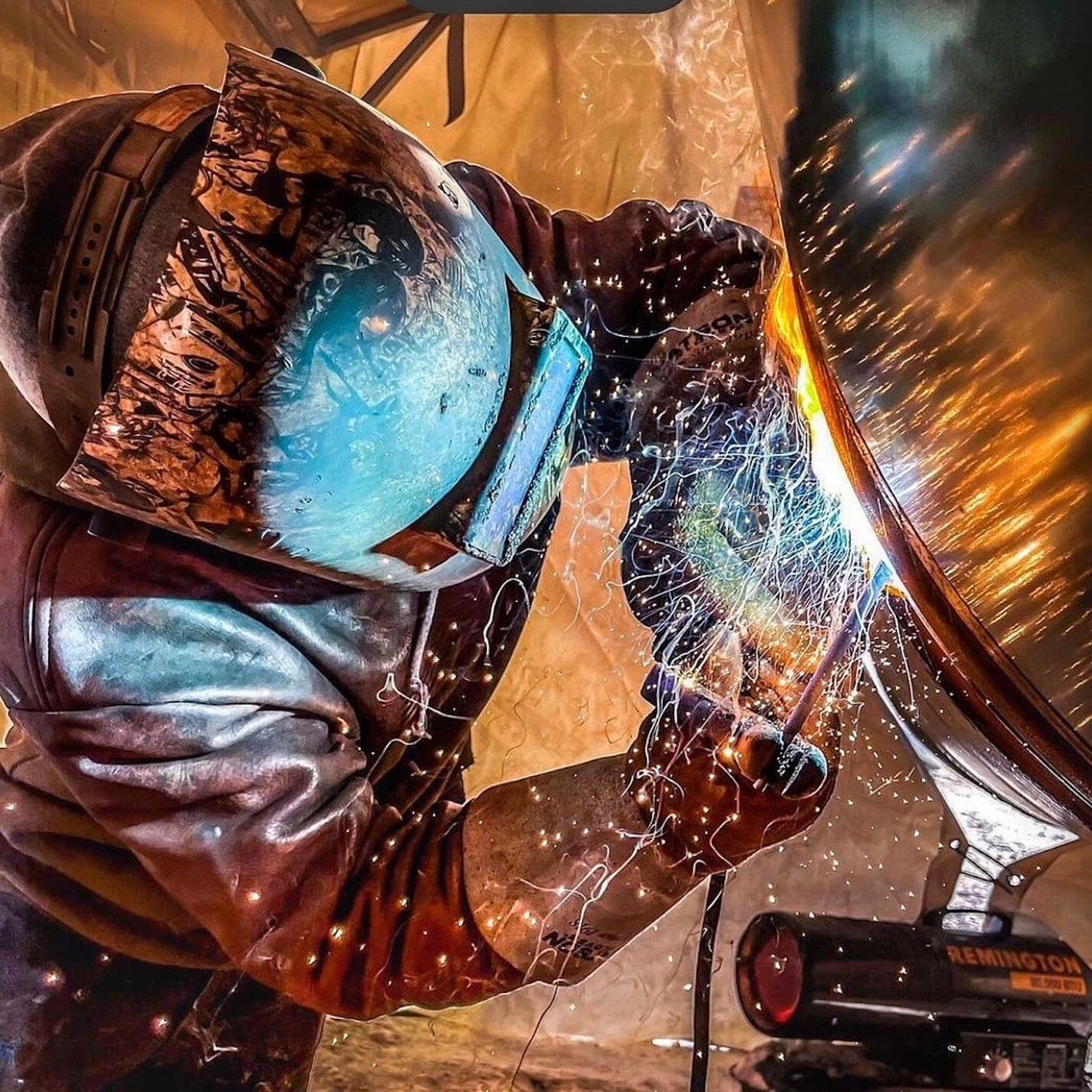Typical Welding Fixing Issues and Exactly How to Address Them Efficiently
Welding fixings commonly experience a variety of concerns that can jeopardize the stability of the end product. Usual problems include inadequate penetration, porosity, and misalignment, among others. Each flaw offers distinct difficulties that require specific approaches for resolution. Understanding these concerns is essential for welders aiming to enhance their abilities and outcomes. This discussion will check out these typical welding repair problems and efficient techniques to resolve them.
Poor Penetration
Poor penetration takes place when the weld steel falls short to totally fuse with the base product, resulting in weak joints and potential architectural failings. This problem often originates from not enough warm input, wrong electrode angle, or incorrect welding rate. Welders might encounter poor infiltration because of a miscalculation of the required parameters for a specific product thickness or type. In addition, contamination on the base product's surface area can hinder reliable bonding, exacerbating the problem. To attend to insufficient penetration, welders ought to ensure appropriate settings on their devices and maintain a tidy job surface. Normal assessment of welds is suggested to identify any kind of shortages early, permitting timely improvements and the prevention of endangered structural stability in bonded settings up.
Porosity
Porosity is an usual issue in welded joints that shows up as little gas bubbles trapped within the weld steel. This defect can compromise the honesty of the weld, resulting in reduced stamina and prospective failing under anxiety. Montana Mobile Welding and Repair Belgrade Welding. Porosity usually develops from contamination, wetness, or improper welding methods, which enable gases to run away right into the liquified weld pool. To attend to porosity, welders need to guarantee proper surface preparation, maintain a tidy functioning atmosphere, and use appropriate welding criteria. Furthermore, selecting the ideal filler product and protecting gas can alleviate gas entrapment. Regular inspection and screening of welds can aid recognize porosity early, guaranteeing timely restorative activities are taken, therefore maintaining the quality and reliability of the bonded structure
Misalignment
Misalignment in welding can emerge from numerous aspects, consisting of inappropriate arrangement and thermal development. Understanding the source is crucial for effective resolution. Numerous adjustment techniques are readily available to straighten elements and ensure architectural honesty.
Sources of Misalignment
Welding imbalance often originates from a range of underlying problems that can endanger architectural stability. One primary cause is improper fit-up of elements before welding, which can result in gaps and unequal surfaces. Variants in thermal development during the welding process can likewise cause distortion, especially if the materials being signed up with have various coefficients of development. Additionally, insufficient fixturing and securing may fail to hold parts safely in place, resulting in activity during welding. Poorly conserved devices, consisting of welding makers and devices, might present disparities in the weld bead, further adding to misalignment. Ultimately, operator mistake, originating from insufficient training or experience, can likewise play a significant role in creating misaligned welds.
Improvement Techniques Offered
Resolving imbalance efficiently requires a combination of corrective methods customized to the certain issues handy. One common method is using components or jigs to hold elements in the correct position throughout welding, guaranteeing regular positioning. Additionally, pre-heating the products can help in reducing distortion and boost fit-up. For considerable imbalance, mechanical realignment methods, such as utilizing hydraulic jacks or clamps, can be used to deal with the position before welding. Post-weld warmth therapy might likewise be necessary to relieve stress and anxieties brought on by misalignment. Careful assessment and modification throughout the setup phase can protect against misalignment problems from ending up being considerable problems, promoting a smoother welding process and improving general architectural honesty.
Distortion
Distortion is a common difficulty in welding that can develop from different aspects, including uneven heating & cooling. Recognizing the root causes of distortion is crucial for implementing reliable prevention techniques. Addressing this problem not only enhances structural stability however also enhances the general quality of the weld.
Reasons for Distortion
When based on the extreme heat of welding, products typically go through changes that can bring about distortion. This sensation largely arises from thermal development and tightening throughout the welding procedure. As the weld location heats up, the material increases; upon air conditioning, it contracts, which can develop interior stress and anxieties. Furthermore, unequal home heating across a work surface can intensify these anxieties, leading to bending or bending. The type of product additionally plays a significant duty; steels with varying thermal conductivity and coefficients of growth may react in a different way, leading to unpredictable distortions. Inadequate joint layout and insufficient fixturing can contribute to imbalance during welding, increasing the chance of distortion. Recognizing these causes is vital for effective welding fixing and avoidance approaches.
Avoidance Techniques
Effective prevention strategies for distortion throughout welding concentrate on regulating heat input and ensuring appropriate joint design. Keeping a regular heat input helps to minimize thermal development and contraction, which can cause distortion. Making use of strategies such as pre-heating the workpiece can additionally reduce the temperature mig welder gradient, advertising uniform home heating. Furthermore, picking appropriate joint layouts, such as T-joints or lap joints, can improve security and decrease tension focus. Executing appropriate fixturing to protect the work surfaces in position even more aids in maintaining positioning during the welding procedure. Staggered welding sequences can disperse heat much more equally, preventing localized distortion. By using these strategies, welders can substantially lower the likelihood of distortion and improve the general quality of their welds.
Breaking
Cracking is an usual concern run into in welding repair work, commonly resulting from numerous aspects such as incorrect cooling prices, material choice, or poor joint preparation. The occurrence of splits can greatly jeopardize the integrity of the weld, resulting in potential failures during operation. To resolve this problem, welders must initially examine the origin, making certain that products are suitable and properly selected for the details application. Furthermore, controlling the cooling rate during the welding process is important; rapid air conditioning can induce tension and cause fracturing. Correct joint design and prep work additionally contribute to minimizing the danger. Executing these approaches can boost weld quality and resilience, eventually lowering the likelihood of cracking in ended up weldments.

Insufficient Blend
A substantial concern in welding repairs is incomplete blend, which occurs when the weld steel does not effectively bond with the base product or previous weld passes - Montana Mobile Welding and Repair. This defect can bring about weak points in the joint, potentially endangering the honesty of the welded framework. Aspects contributing to insufficient combination consist of inadequate warm input, incorrect welding method, and contamination of the surface areas being joined. To resolve this concern effectively, welders need to ensure correct pre-weld cleaning and surface prep work, as well as adjust their welding specifications to accomplish ample infiltration and fusion. Regular evaluation throughout the welding procedure can likewise assist identify insufficient combination early, permitting prompt restorative actions to boost the total quality of the weld
Overheating
While welding repairs can improve architectural honesty, overheating presents a significant challenge that can result in product deterioration. Excessive warm throughout welding can alter the mechanical buildings of steels, resulting in lowered toughness, boosted brittleness, and bending. This phenomenon is especially important in high-stress applications where architectural integrity is extremely important. Determining getting too hot can involve aesthetic assessments for staining or distortion, as well as keeping track of temperature during the welding process. To minimize the threats related to overheating, welders must use proper techniques, such as controlling heat input, adjusting traveling rate, and using suitable filler products. Additionally, applying pre- and post-weld warm treatments can assist bring back material homes and improve the general top click here for more info quality of the repair work, making sure long-term performance and safety.
Frequently Asked Concerns
What Are the Typical Indications of a Welding Issue?

How Can I Check My Welds for Quality?
To evaluate welds for top quality, one can utilize aesthetic inspections, ultrasonic screening, and radiographic techniques. Each technique assures architectural stability, identifies defects, and validates adherence to defined criteria, eventually improving the reliability of the bonded joints.
What Safety and security Precautions Should I Take While Welding?
When welding, one should prioritize security by wearing suitable personal protective devices, ensuring correct ventilation, securing combustible products away, preserving a clean office, and being aware of surroundings to stop injuries and mishaps.
Can I Repair a Weld Without Redesigning the Entire Joint?
Repairing a weld without remodeling the whole joint is possible, relying on the damages (Belgrade Welding). Strategies such as grinding, including filler product, or using a welding process can efficiently address specific imperfections while maintaining the surrounding framework
What Equipment Are Crucial for Effective Welding Repairs?
Important devices for reliable welding repair work get redirected here include a welding machine, cable brush, grinder, protective equipment, clamps, and filler products. Each tool plays an essential duty in guaranteeing high quality and safety throughout the repair service procedure. Porosity usually arises from contamination, wetness, or incorrect welding strategies, which allow gases to leave right into the liquified weld swimming pool. Poorly maintained tools, consisting of welding machines and devices, may introduce variances in the weld bead, additional adding to imbalance. When subjected to the intense warm of welding, materials often undergo modifications that can lead to distortion. Splitting is a common problem encountered in welding fixings, often resulting from different variables such as incorrect cooling rates, product option, or poor joint preparation. A substantial concern in welding repair services is insufficient fusion, which takes place when the weld steel does not effectively bond with the base product or previous weld passes.